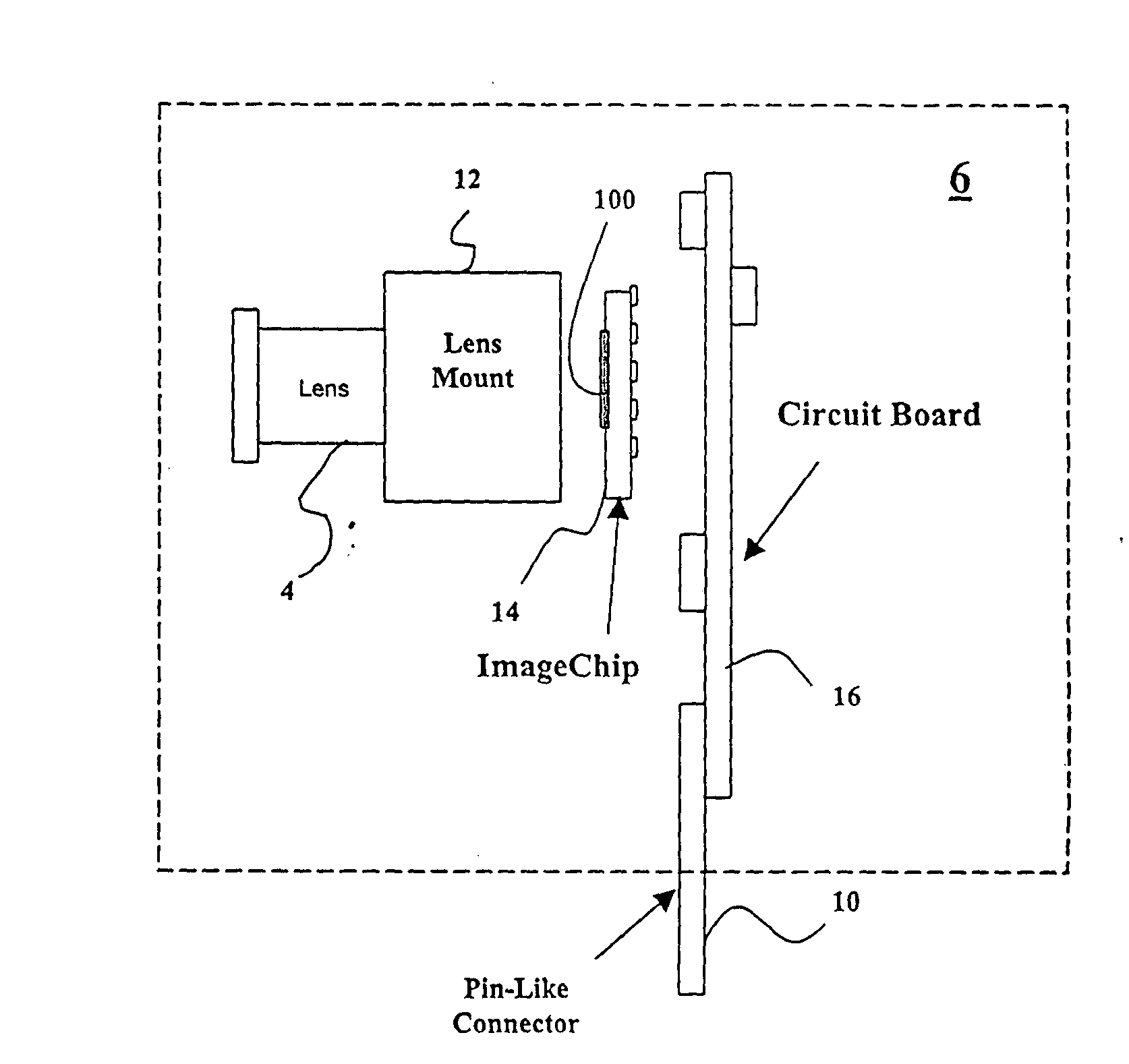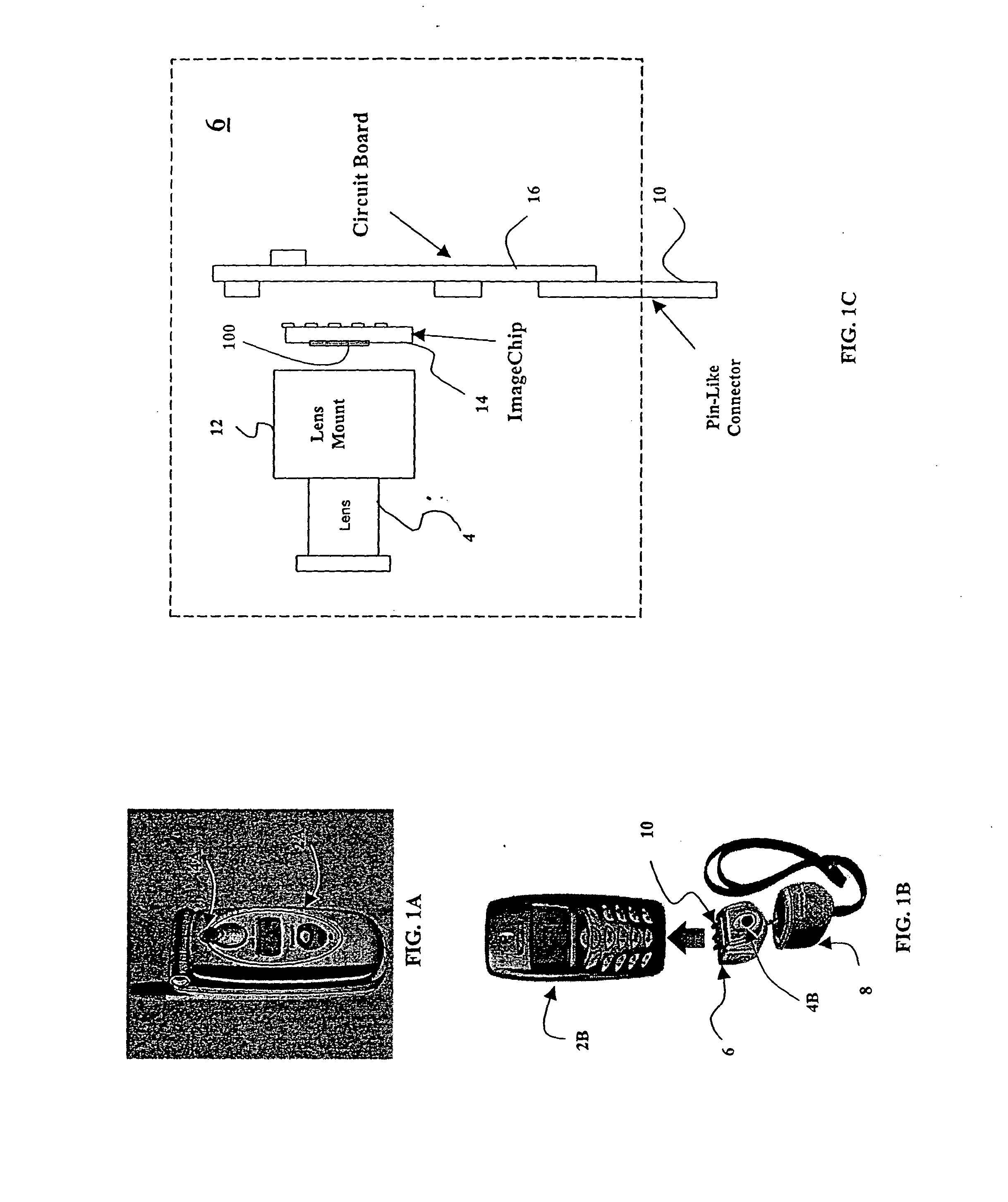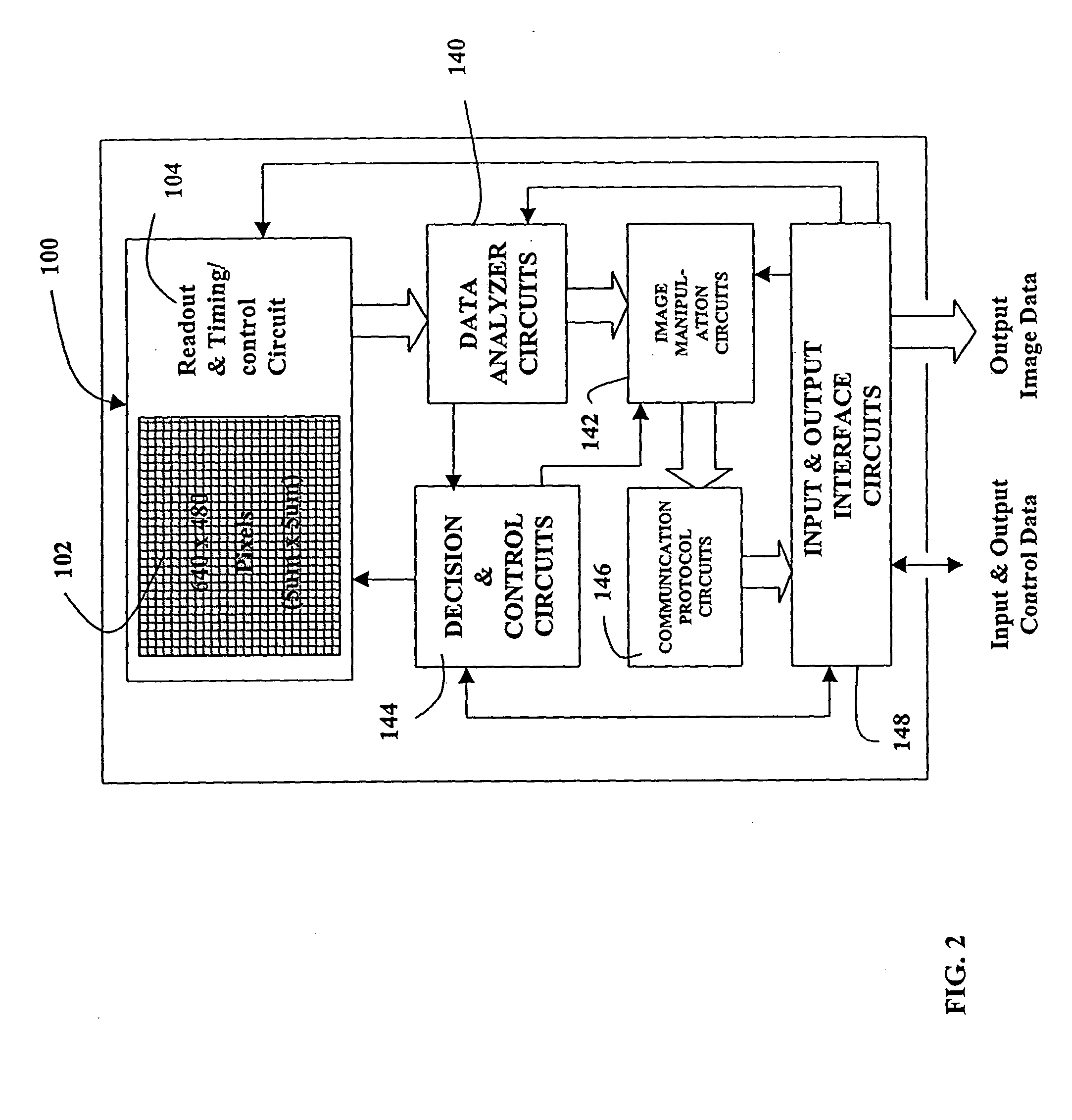Photoconductor on active pixel image sensor
a photoconductor and image sensor technology, applied in the field of photoconductor on active pixel image sensor, can solve the problems of large energy consumption of small cameras using ccd sensors, occupied circuitry, and inability to use photo-sensing
- Summary
- Abstract
- Description
- Claims
- Application Information
AI Technical Summary
Benefits of technology
Problems solved by technology
Method used
Image
Examples
Embodiment Construction
[0048] Single Chip Camera with Photo Conductor on Active Pixel Sensor A preferred embodiment of the present invention is a single chip camera with a sensor consisting of a photodiode array consisting of photoconductive layers on top of an active array of CMOS circuits. (Applicants refer to this sensor as a "POAP Sensor" the "POAP" referring to "Photoconductor On Active Pixel".) In this particular POAP sensor there are 307,200 pixels arranged in as a 640.times.480 pixel array and there is a transparent electrode on top of the photoconductive layers. The pixels are 5 microns.times.5 microns and the packing fraction is approximately 100 percent. The active dimensions of the sensor are 3.2 mm.times.2.4 mm and a preferred lens unit is a standard lens with a {fraction (1 / 4.5)} inch optical format. A preferred application of the camera is as a component of a cellular phone as shown in FIGS. 1A and 1B. In the 1A drawing the camera is an integral part of the phone 2A and the lens is shown at...
PUM
 Login to View More
Login to View More Abstract
Description
Claims
Application Information
 Login to View More
Login to View More - R&D
- Intellectual Property
- Life Sciences
- Materials
- Tech Scout
- Unparalleled Data Quality
- Higher Quality Content
- 60% Fewer Hallucinations
Browse by: Latest US Patents, China's latest patents, Technical Efficacy Thesaurus, Application Domain, Technology Topic, Popular Technical Reports.
© 2025 PatSnap. All rights reserved.Legal|Privacy policy|Modern Slavery Act Transparency Statement|Sitemap|About US| Contact US: help@patsnap.com



